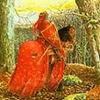MNAC (Barcelona)
Realismo(s). La huella de Courbet
8 de abril - 10 de julio de 2011
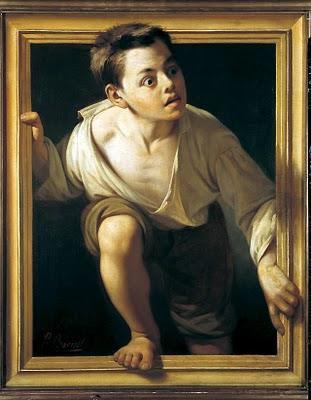 El pintor francés Gustave Courbet sacudió el mundo del arte en el siglo XIX. A través de su pincel, la realidad entraba en los cuadros: nacía el realismo. Con el objetivo de recorrer su huella en nuestro país, el MNAC exhibe una selección de sus obras más destacadas, que en su mayoría se exponen por primera vez en España. La exposición revela la influencia de Courbet en la pintura catalana de la época, a partir sobre todo de la obra de Ramon Martí Alsina, artífice de la renovación pictórica e introductor del realismo en el panorama artístico español. Una ambiciosa muestra de producción propia que invita al público a profundizar en el realismo y a la vez a descubrir sus antecedentes y su legado en un recorrido que expresamente traspasa los límites temporales de este movimiento: desde el Siglo de Oro español, con pinturas de Murillo, Ribera y Velázquez, hasta el arte contemporáneo, a través de la obra de Antoni Tàpies, uno de los artistas catalanes más universales.
El pintor francés Gustave Courbet sacudió el mundo del arte en el siglo XIX. A través de su pincel, la realidad entraba en los cuadros: nacía el realismo. Con el objetivo de recorrer su huella en nuestro país, el MNAC exhibe una selección de sus obras más destacadas, que en su mayoría se exponen por primera vez en España. La exposición revela la influencia de Courbet en la pintura catalana de la época, a partir sobre todo de la obra de Ramon Martí Alsina, artífice de la renovación pictórica e introductor del realismo en el panorama artístico español. Una ambiciosa muestra de producción propia que invita al público a profundizar en el realismo y a la vez a descubrir sus antecedentes y su legado en un recorrido que expresamente traspasa los límites temporales de este movimiento: desde el Siglo de Oro español, con pinturas de Murillo, Ribera y Velázquez, hasta el arte contemporáneo, a través de la obra de Antoni Tàpies, uno de los artistas catalanes más universales.Musée d'Orsay (París)
Manet, inventeur du Moderne
5 de abril - 3 de julio de 2011
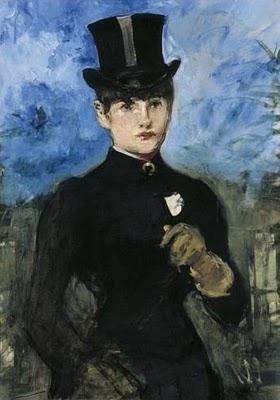 Plus qu'une rétrospective monographique, Manet, inventeur du Moderne entend explorer et éclairer la situation historique d'Edouard Manet (1832-1883), entre l'héritage réaffirmé du romantisme, l'impact de ses contemporains et le flux médiatique de son époque. Moderne, Manet l'est encore en défiant les maîtres anciens, de Fra Angelico à Vélasquez. Cette exposition repense de même les multiples liens que le peintre a résolument noués ou dénoués avec la sphère publique et politique. Car la modernité est aussi affaire d'inscription, voire d'opposition. Le parcours s'attarde donc sur l'enseignement de Thomas Couture, l'impulsion de Baudelaire, la réforme de l'art religieux, l'imaginaire érotique, l'art du fragment(é), le rapport à la peinture féminine (Berthe Morisot, Eva Gonzalès), la tentation mondaine, son impressionnisme décalé comme sa complicité avec le Mallarmé le plus noir.
Plus qu'une rétrospective monographique, Manet, inventeur du Moderne entend explorer et éclairer la situation historique d'Edouard Manet (1832-1883), entre l'héritage réaffirmé du romantisme, l'impact de ses contemporains et le flux médiatique de son époque. Moderne, Manet l'est encore en défiant les maîtres anciens, de Fra Angelico à Vélasquez. Cette exposition repense de même les multiples liens que le peintre a résolument noués ou dénoués avec la sphère publique et politique. Car la modernité est aussi affaire d'inscription, voire d'opposition. Le parcours s'attarde donc sur l'enseignement de Thomas Couture, l'impulsion de Baudelaire, la réforme de l'art religieux, l'imaginaire érotique, l'art du fragment(é), le rapport à la peinture féminine (Berthe Morisot, Eva Gonzalès), la tentation mondaine, son impressionnisme décalé comme sa complicité avec le Mallarmé le plus noir. Musée du Luxembourg (París)
Cranach et son temps
9 de febrero - 23 de mayo de 2011
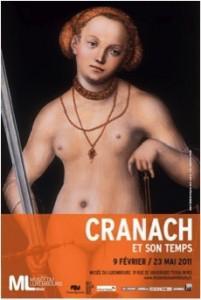 Présentée au musée du Luxembourg, l’exposition Cranach et son temps contribue à faire comprendre la place de cet artiste dans l’histoire de l’art et son implication dans la société de son temps, touchée alors par de profonds bouleversements politiques et religieux. L’exposition montre d’abord la dimension européenne de l’art de Lucas Cranach, qui est non seulement marquée par les oeuvres de Dürer dont les gravures circulent, mais qui regarde aussi du côté des Flandres et de l’Italie. Pour faire apparaître ces influences, l’exposition met en regard tableaux, dessins et gravures de Cranach avec la production d’autres artistes. Elle consacre une place importante à ses voyages qui ont été favorisés par sa position officielle à partir de 1505 au sein de la cour de Frédéric le Sage, prince électeur de Saxe, fixée à Wittenberg.
Présentée au musée du Luxembourg, l’exposition Cranach et son temps contribue à faire comprendre la place de cet artiste dans l’histoire de l’art et son implication dans la société de son temps, touchée alors par de profonds bouleversements politiques et religieux. L’exposition montre d’abord la dimension européenne de l’art de Lucas Cranach, qui est non seulement marquée par les oeuvres de Dürer dont les gravures circulent, mais qui regarde aussi du côté des Flandres et de l’Italie. Pour faire apparaître ces influences, l’exposition met en regard tableaux, dessins et gravures de Cranach avec la production d’autres artistes. Elle consacre une place importante à ses voyages qui ont été favorisés par sa position officielle à partir de 1505 au sein de la cour de Frédéric le Sage, prince électeur de Saxe, fixée à Wittenberg. El Prado (Madrid)
El joven Ribera
5 de abril - 31 de julio de 2011
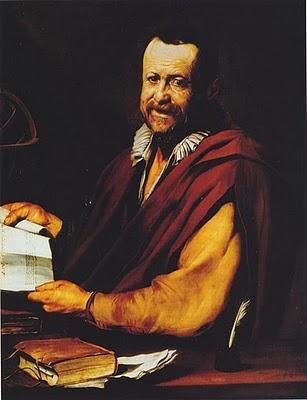 José de Ribera nació en Játiva (Valencia) en 1591. Sin embargo, su carrera se desarrolló en Parma, Roma y Nápoles, donde cultivó un estilo que deriva del que había difundido Caravaggio. La etapa en la que estudió y reelaboró el lenguaje naturalista abarca sus estancias en Parma, Roma y los primeros años de su residencia en Nápoles. Este período, en el que se advierten diferentes fases desde el punto de vista de la escritura pictórica y de los intereses temáticos evidenciando cómo estilo e iconografía interactúan profundamente, es el objeto de esta muestra. Durante su estancia en Roma, la precisión descriptiva y el claroscuro fueron utilizados por Ribera para renovar la presentación de asuntos tradicionales como los Sentidos, los Apóstoles o los Filósofos mientras que en Nápoles, estos mismos instrumentos proporcionarán a su pintura devocional una inconfundible carga de intensidad, rigor y drama. El recorrido de la exposición se ha organizado en torno a distintos ámbitos que agrupan conjuntos de obras relacionadas entre sí o con períodos concretos de la estancia de Ribera en Roma y sus primeros años en Nápoles.
José de Ribera nació en Játiva (Valencia) en 1591. Sin embargo, su carrera se desarrolló en Parma, Roma y Nápoles, donde cultivó un estilo que deriva del que había difundido Caravaggio. La etapa en la que estudió y reelaboró el lenguaje naturalista abarca sus estancias en Parma, Roma y los primeros años de su residencia en Nápoles. Este período, en el que se advierten diferentes fases desde el punto de vista de la escritura pictórica y de los intereses temáticos evidenciando cómo estilo e iconografía interactúan profundamente, es el objeto de esta muestra. Durante su estancia en Roma, la precisión descriptiva y el claroscuro fueron utilizados por Ribera para renovar la presentación de asuntos tradicionales como los Sentidos, los Apóstoles o los Filósofos mientras que en Nápoles, estos mismos instrumentos proporcionarán a su pintura devocional una inconfundible carga de intensidad, rigor y drama. El recorrido de la exposición se ha organizado en torno a distintos ámbitos que agrupan conjuntos de obras relacionadas entre sí o con períodos concretos de la estancia de Ribera en Roma y sus primeros años en Nápoles.Victoria & Albert Museum (Londres)
The Cult of Beauty: The Aesthetic Movement 1860-1900
2 de abril - 17 de julio de 2011
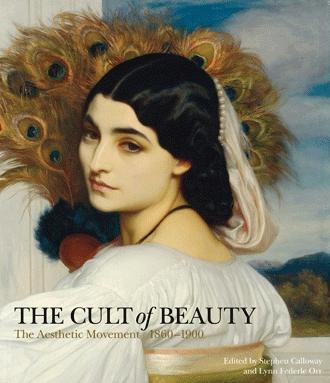 This is the first major exhibition to comprehensively explore Aestheticism, an extraordinary artistic movement which sought to escape the ugliness and materialism of the Victorian era by creating a new kind of art and beauty. It shows how Aesthetic artists, designers, poets and collectors promoted the idea of 'art for art's sake' and how the idea of the 'house beautiful' became a touchstone of cultured life. The exhibition will be arranged in four main chronological sections, charting the development of the Aesthetic Movement in art and design through the decades from the 1860s to the 1890s. As well as paintings, prints and drawings, the show will include examples of all the 'artistic' decorative arts, together with drawings, designs and photographs, as well as portraits, fashionable dress and jewellery of the era. Literary life will be represented by some of the most beautiful books of the day, whilst a number of set-pieces will reveal the visual world of the Aesthetes, evoking the kind of rooms and ensembles of exquisite objects through which they expressed their sensibilities.
This is the first major exhibition to comprehensively explore Aestheticism, an extraordinary artistic movement which sought to escape the ugliness and materialism of the Victorian era by creating a new kind of art and beauty. It shows how Aesthetic artists, designers, poets and collectors promoted the idea of 'art for art's sake' and how the idea of the 'house beautiful' became a touchstone of cultured life. The exhibition will be arranged in four main chronological sections, charting the development of the Aesthetic Movement in art and design through the decades from the 1860s to the 1890s. As well as paintings, prints and drawings, the show will include examples of all the 'artistic' decorative arts, together with drawings, designs and photographs, as well as portraits, fashionable dress and jewellery of the era. Literary life will be represented by some of the most beautiful books of the day, whilst a number of set-pieces will reveal the visual world of the Aesthetes, evoking the kind of rooms and ensembles of exquisite objects through which they expressed their sensibilities.Tate Modern (Londres)
Miró: Retrospective
15 de abril - 11 de septiembre de 2011
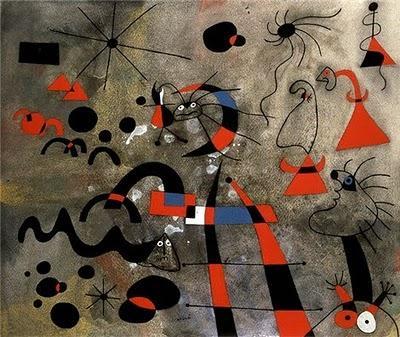 Joan Miró's works come to London in the first major retrospective here for nearly 50 years. Renowned as one of the greatest Surrealist painters, filling his paintings with luxuriant colour, Miró worked in a rich variety of styles. This is a rare opportunity to enjoy more than 150 paintings, drawings, sculptures and prints from moments across the six decades of his extraordinary career. Miró is among the most iconic of modern artists, using a language of symbols that reflects his personal vision, sense of freedom, and energy. The exhibition includes many of the key works that we know and love. It also shows that, behind the engaging innocence of his imagery, lies a profound concern for humanity and a sense of personal and national identity. Extraordinary works from different moments of his career celebrate his roots in his native Catalonia.
Joan Miró's works come to London in the first major retrospective here for nearly 50 years. Renowned as one of the greatest Surrealist painters, filling his paintings with luxuriant colour, Miró worked in a rich variety of styles. This is a rare opportunity to enjoy more than 150 paintings, drawings, sculptures and prints from moments across the six decades of his extraordinary career. Miró is among the most iconic of modern artists, using a language of symbols that reflects his personal vision, sense of freedom, and energy. The exhibition includes many of the key works that we know and love. It also shows that, behind the engaging innocence of his imagery, lies a profound concern for humanity and a sense of personal and national identity. Extraordinary works from different moments of his career celebrate his roots in his native Catalonia.Metropolitan (Nueva York)
Rooms with a View: The Open Window in the 19th Century
5 de abril - 4 de julio de 2011
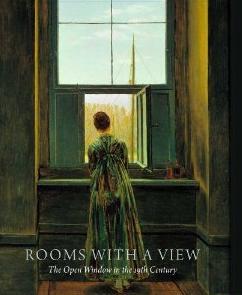 This exhibition will focus on the Romantic motif of the open window as first captured by German, Danish, French, and Russian artists around 1810–20. These works include hushed, sparse rooms showing contemplative figures, studios with artists at work, and window views as sole motifs. The exhibition will feature some thirty oils and thirty works on paper by, among others, C.D. Friedrich, C. G. Carus, G. F. Kersting, Adolph Menzel, C.W. Eckersberg, Martinus Rørbye, Jean Alaux, and Léon Cogniet. Loans to the exhibition will come from museums in Germany, Denmark, France, Austria, Sweden, Italy, and the United States. The exhibition is made possible by the Anna-Maria and Stephen Kellen Foundation and The Isaacson-Draper Foundation. The catalogue is made possible by the Anna-Maria and Stephen Kellen Foundation.
This exhibition will focus on the Romantic motif of the open window as first captured by German, Danish, French, and Russian artists around 1810–20. These works include hushed, sparse rooms showing contemplative figures, studios with artists at work, and window views as sole motifs. The exhibition will feature some thirty oils and thirty works on paper by, among others, C.D. Friedrich, C. G. Carus, G. F. Kersting, Adolph Menzel, C.W. Eckersberg, Martinus Rørbye, Jean Alaux, and Léon Cogniet. Loans to the exhibition will come from museums in Germany, Denmark, France, Austria, Sweden, Italy, and the United States. The exhibition is made possible by the Anna-Maria and Stephen Kellen Foundation and The Isaacson-Draper Foundation. The catalogue is made possible by the Anna-Maria and Stephen Kellen Foundation.Museum of Modern Art (Nueva York)
German Expressionism: The Graphic Impulse
27 de marzo - 11 de julio de 2011
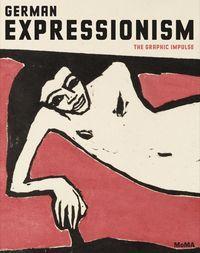 From E. L. Kirchner to Max Beckmann, artists associated with German Expressionism in the early decades of the twentieth century took up printmaking with a collective dedication and fervor virtually unparalleled in the history of art. The woodcut, with its coarse gouges and jagged lines, is known as the preeminent Expressionist medium, but the Expressionists also revolutionized the mediums of etching and lithography to alternately vibrant and stark effect. This exhibition, featuring approximately 250 works by some thirty artists, is drawn from MoMA’s outstanding holdings of German Expressionist prints, enhanced by selected drawings, paintings, and sculptures from the collection. The graphic impulse is traced from the formation of the Brücke artists group in 1905, through the war years of the 1910s, and extending into the 1920s, when individual artists continued to produce compelling work even as the movement was winding down.
From E. L. Kirchner to Max Beckmann, artists associated with German Expressionism in the early decades of the twentieth century took up printmaking with a collective dedication and fervor virtually unparalleled in the history of art. The woodcut, with its coarse gouges and jagged lines, is known as the preeminent Expressionist medium, but the Expressionists also revolutionized the mediums of etching and lithography to alternately vibrant and stark effect. This exhibition, featuring approximately 250 works by some thirty artists, is drawn from MoMA’s outstanding holdings of German Expressionist prints, enhanced by selected drawings, paintings, and sculptures from the collection. The graphic impulse is traced from the formation of the Brücke artists group in 1905, through the war years of the 1910s, and extending into the 1920s, when individual artists continued to produce compelling work even as the movement was winding down.National Gallery (Washington)
Venice: Canaletto and His Rivals
20 de febrero - 30 de mayo de 2011
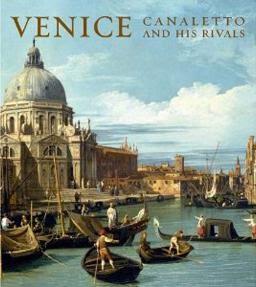 Venice inspired a school of competitive view painters whose achievements are among the most brilliant in 18th-century art. The exhibition celebrates the rich variety of these Venetian views, known as vedute, through some 20 masterworks by Canaletto and more than 30 by his rivals, including Michele Marieschi, Francesco Guardi, and Bernardo Bellotto. Responding to an art market fueled largely by the Grand Tour, these gifted painters depicted the famous monuments and vistas of Venice in different moods and seasons. It is also made possible through the generous support of the Anna-Maria and Stephen Kellen Foundation. Additional support is kindly provided by Sally Engelhard Pingree and The Charles Engelhard Foundation. The exhibition is supported by an indemnity from the Federal Council on the Arts and the Humanities.
Venice inspired a school of competitive view painters whose achievements are among the most brilliant in 18th-century art. The exhibition celebrates the rich variety of these Venetian views, known as vedute, through some 20 masterworks by Canaletto and more than 30 by his rivals, including Michele Marieschi, Francesco Guardi, and Bernardo Bellotto. Responding to an art market fueled largely by the Grand Tour, these gifted painters depicted the famous monuments and vistas of Venice in different moods and seasons. It is also made possible through the generous support of the Anna-Maria and Stephen Kellen Foundation. Additional support is kindly provided by Sally Engelhard Pingree and The Charles Engelhard Foundation. The exhibition is supported by an indemnity from the Federal Council on the Arts and the Humanities.Palazzo Strozzi (Florencia)
Picasso, Miró, Dalí: Giovani arrabbiati. La nascita della modernitá
12 de marzo - 17 de julio de 2011
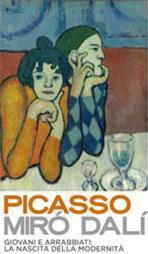 La mostra Picasso, Miró, Dalí. Giovani e arrabbiati: la nascita della modernità curata da Eugenio Carmona e Christoph Vitali, presenta più di sessanta opere della produzione giovanile di Picasso, Miró e Dalí e oltre cento schizzi picassiani, provenienti dai più importanti musei spagnoli, dal Metropolitan Museum of Art e da collezioni private. Cresciuti in Catalogna, i tre artisti raggiunsero la fama in Francia, dove i primi due scelsero di vivere e costruire la propria carriera, mentre Dalí decise di rimanere in Spagna. L’esposizione è strutturata come un film composto da flashback che rinviano a una serie di incontri che viaggiano a ritroso per riannodare le fila di un racconto: comincia con la visita di Dalí a Picasso (1926), traccia poi la nascita della modernità attraverso le risposte di Dalí a Miró, evidenzia l’incrocio fra Miró e Picasso (1917) e termina ancor prima dell’arrivo del giovanissimo Picasso a Parigi nel 1900, all’inizio del nuovo secolo.
La mostra Picasso, Miró, Dalí. Giovani e arrabbiati: la nascita della modernità curata da Eugenio Carmona e Christoph Vitali, presenta più di sessanta opere della produzione giovanile di Picasso, Miró e Dalí e oltre cento schizzi picassiani, provenienti dai più importanti musei spagnoli, dal Metropolitan Museum of Art e da collezioni private. Cresciuti in Catalogna, i tre artisti raggiunsero la fama in Francia, dove i primi due scelsero di vivere e costruire la propria carriera, mentre Dalí decise di rimanere in Spagna. L’esposizione è strutturata come un film composto da flashback che rinviano a una serie di incontri che viaggiano a ritroso per riannodare le fila di un racconto: comincia con la visita di Dalí a Picasso (1926), traccia poi la nascita della modernità attraverso le risposte di Dalí a Miró, evidenzia l’incrocio fra Miró e Picasso (1917) e termina ancor prima dell’arrivo del giovanissimo Picasso a Parigi nel 1900, all’inizio del nuovo secolo.Palazzo Reale (Milán)
Arcimboldo
10 de febrero - 22 de mayo de 2011
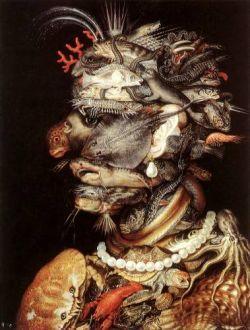 Pittore ammiratissimo al tempo, tanto da essere chiamato nel 1562 da Massimiliano II d’Asburgo a lavorare alla corte imperiale di Vienna (e poi a Praga), venne in seguito dimenticato, e la sua opera classificata come "scuola di Leonardo", a testimoniare in ogni caso il suo evidente legame con la cultura lombarda e con l’opera geniale del Maestro di Vinci. È stato solo nel corso del Novecento, con le avanguardie artistiche, prima tra tutte il Surrealismo, che la sua opera è stata riscoperta, e ha cominciato a costituire un’inesauribile fonte di ispirazione per tanti artisti contemporanei. A partire da allora, le immagini di Arcimboldo sono entrate nell’immaginario collettivo, grazie alla grafica e alla pubblicità, facendone uno degli artisti più conosciuti e amati dal vasto pubblico, ma anche uno dei più misteriosi. La mostra ha così l’obiettivo di raccontare quale sia stata l’origine di queste straordinarie invenzioni, e di cercare di svelare anche un piccolo mistero, fino ad oggi rimasto senza risposta.
Pittore ammiratissimo al tempo, tanto da essere chiamato nel 1562 da Massimiliano II d’Asburgo a lavorare alla corte imperiale di Vienna (e poi a Praga), venne in seguito dimenticato, e la sua opera classificata come "scuola di Leonardo", a testimoniare in ogni caso il suo evidente legame con la cultura lombarda e con l’opera geniale del Maestro di Vinci. È stato solo nel corso del Novecento, con le avanguardie artistiche, prima tra tutte il Surrealismo, che la sua opera è stata riscoperta, e ha cominciato a costituire un’inesauribile fonte di ispirazione per tanti artisti contemporanei. A partire da allora, le immagini di Arcimboldo sono entrate nell’immaginario collettivo, grazie alla grafica e alla pubblicità, facendone uno degli artisti più conosciuti e amati dal vasto pubblico, ma anche uno dei più misteriosi. La mostra ha così l’obiettivo di raccontare quale sia stata l’origine di queste straordinarie invenzioni, e di cercare di svelare anche un piccolo mistero, fino ad oggi rimasto senza risposta.